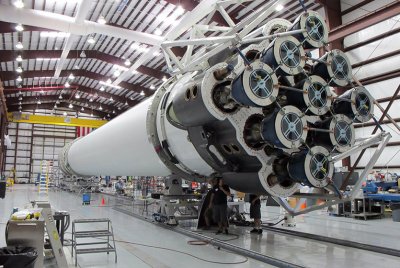The world of technology is constantly evolving and transforming itself. However, the benefit of this revolution is that changes must occur for the success of an organization in its IT practices as well. The further technology develops, the greater the changes occur. IT infrastructure management is one crucial change that organizations need to adopt in order to seamlessly navigate through the corporate world, establishing a streamlined work process, data flow and secure networks.
Let’s first take a look at what IT infrastructure Management is.
What is IT Infrastructure Management?
In simple terms, IT Infrastructure Management is the efficient management of the software, hardware and alignment of digital processes, systems and diverse policies to ensure smooth operations in an organization. In IT infrastructure management, three core components are considered: the Systems, Storage and Network.
The systems component includes the hardware and software that encompasses the organization’s IT Infrastructure. This refers to the servers, storage devices, workstations, and networking equipment.
The storage component in IT infrastructure management pertains to the management of data storage and its retrieval. It also includes physical storage devices and cloud-based storage solutions.
The network component deals with the connectivity between diverse devices, systems and locations. This includes the careful design, implementation, and management of various networking technologies such as routers, switches, firewalls, and wireless access points.
What are the Objectives of IT Infrastructure Management?
The key objective of IT infrastructure management is to ensure a smooth, seamless operation of business activities. This means that IT operations, security and technology resources are aligned for a streamlined process. IT infrastructure management aims to align the digital processing involved to align with the organizational goals and requirements. By enforcing efficient policies, risk management, and implementing scalability strategies, this alignment can be achieved which can significantly contribute towards allowing a business to harness the untapped potential of transformative technology.
Innovative Strategies for Efficient IT Structure Management
To ensure the efficient management of an organization’s IT infrastructure there are many methods which businesses can apply. These diverse practices will ensure a resilient IT ecosystem, which will enhance operational efficiency and drive faster growth as well. Some of the various methods that businesses can adopt have been mentioned below:
Cloud Adoption
Cloud computing is emerging as one of the most transformative pieces of technology to have been introduced in recent times. Offering unparalleled scalability and flexibility, it is the holy grail of IT infrastructure management. Cloud adoption is an ideal method for improving resource allocation, seamlessly transitioning up or down according to fluctuating demands. With the help of Cloud-based services, IT teams can focus on strategic initiatives and execution instead of concentrating on routine maintenance tasks. This is because cloud-based services offer several tools that help with automated provisioning, monitoring, and management.
An incredible advantage of cloud adoption is that it offers enhanced accessibility and collaboration, which allows IT teams to work geographically diversely across the world without any bounds. By utilizing cloud services and aligning them with its business goals, an organization can improve its IT efficiency and performance and also drive progress and innovation.
Related to read:- Cloud Deployment Models and Their Advantages and Disadvantages
Automation
Automation, as a word, may seem daunting to many, yet it can save time for every IT team. Automation ensures that repetitive tasks that might be monotonous and unproductive perhaps can be carried out to free up human resources. Automation tools and frameworks allow organizations to streamline routine tasks, reduce manual intervention and erase human error. With the proper usage of automation, human resources are able to focus on strategic initiatives and carry out consistent and standardized processes.
Through tools like provisioning and configuration, monitoring and troubleshooting, organizations can acclimate themselves to changing demands and provide solutions while maintaining high accuracy. Automation tools assist in the smooth operations of processes and is a crucial component of IT Infrastructure management.
Virtualization
Virtualization allows for the maximization of resource utilization. This has revolutionized the world of IT infrastructure management since it provides for the development of virtual versions of servers, storage and networks. With the creation of virtual instances, virtualization ensures the maximization of server utilization and consolidation workload. Virtualization also helps in reducing the physical footprint of an organization, which leads to a reduction in costs and power consumption.
With virtualization, management flexibility can be significantly increased as it helps organizations develop storage pools and virtual networks. It also provides snapshot and replication capabilities to ensure swift recovery from system failure. Virtualization allows you to create isolated sandboxes where you can assess new applications or updates before their deployment, providing higher reliability as well. The benefits of virtualization are endless.
Network Optimization
Network Optimization is the connecting component of IT infrastructure management, which ensures that various devices, applications, systems and stakeholders are all well-connected.
In network optimization, network components are carefully designed, configured and monitored for the minimization of latency, improving the data transfer speeds and optimizing bandwidth allocation.
With the usage of advanced technologies such as Quality of Service (quality of service), load balancing and traffic shaping, organizations can diversify their priorities and allocate network resources judiciously. By doing so, use experience is improving and this ensures that critical operations are undisturbed by network congestion. In case of network disruptions, businesses can implement redundant network paths, failover mechanisms and data replication for quick recovery.
Conclusion
Efficient IT infrastructure management is crucial for ensuring an organization’s success in the digital era that we live in. Embracing the changes that have occurred and the new technologies that have been introduced will allow businesses to transition and navigate the complexities of the IT world smoothly. By carefully crafting an IT infrastructure that caters to your organization’s requirements and goals, you can maneuver through the various challenges that arise and drive your business towards operational excellence. By embracing new technologies and being aware of the upcoming technologies that are revolutionary you can stand out from the rest.
FAQs
Effective IT infrastructure management is crucial for maintaining the reliability, security, and efficiency of IT systems. It ensures that technology aligns with business needs, adapts to changes, and supports organizational growth.
IT infrastructure management implements security measures like firewalls, antivirus software, malware detection, and intrusion detection systems to protect itself against cyber threats. Regular updates and monitoring enhance overall security.
Automation streamlines routine tasks, reducing manual efforts and minimizing errors. It is used for configuration management, updates, backups, and other repetitive processes.
Organizations can significantly benefit from IT infrastructure management. Some of them include increased system reliability, enhanced security, improved efficiency, reduced downtime, better alignment with business goals, and the ability to adapt to technological advancements.
Yes, organizations can opt for managed IT services or outsourcing for specific aspects of infrastructure management. This can provide expertise, cost-effectiveness, and scalability.
















